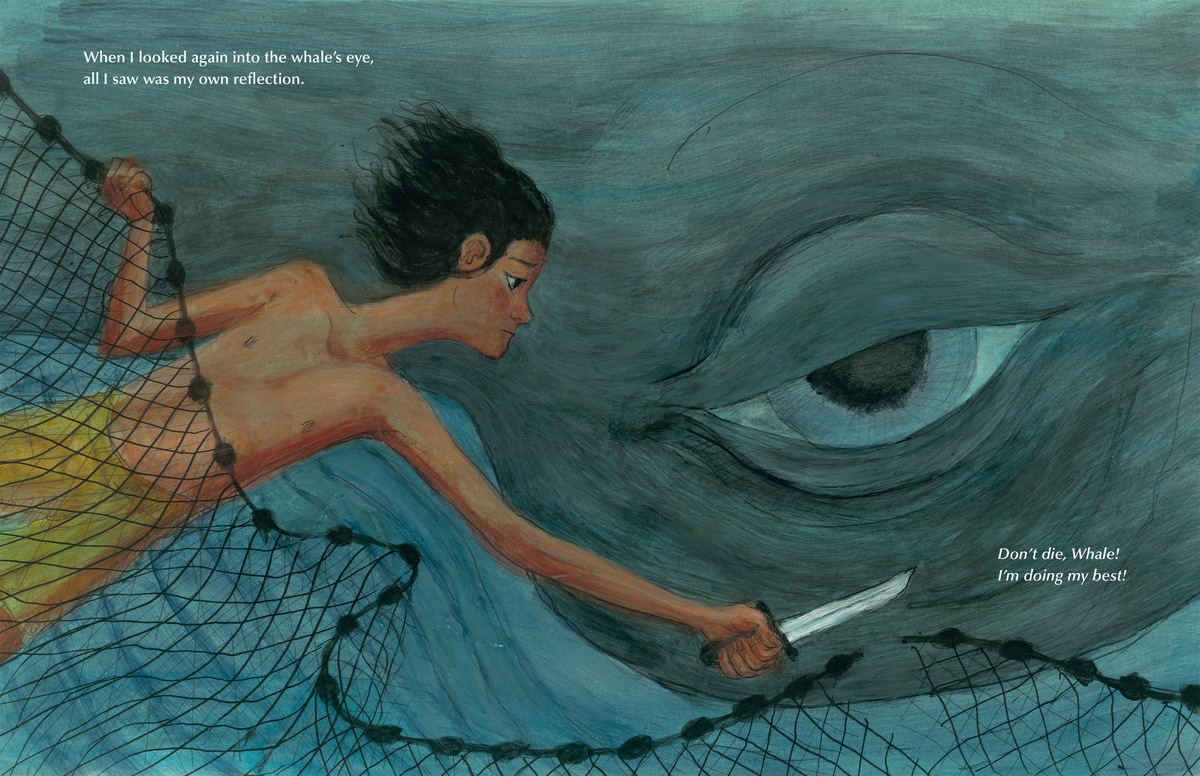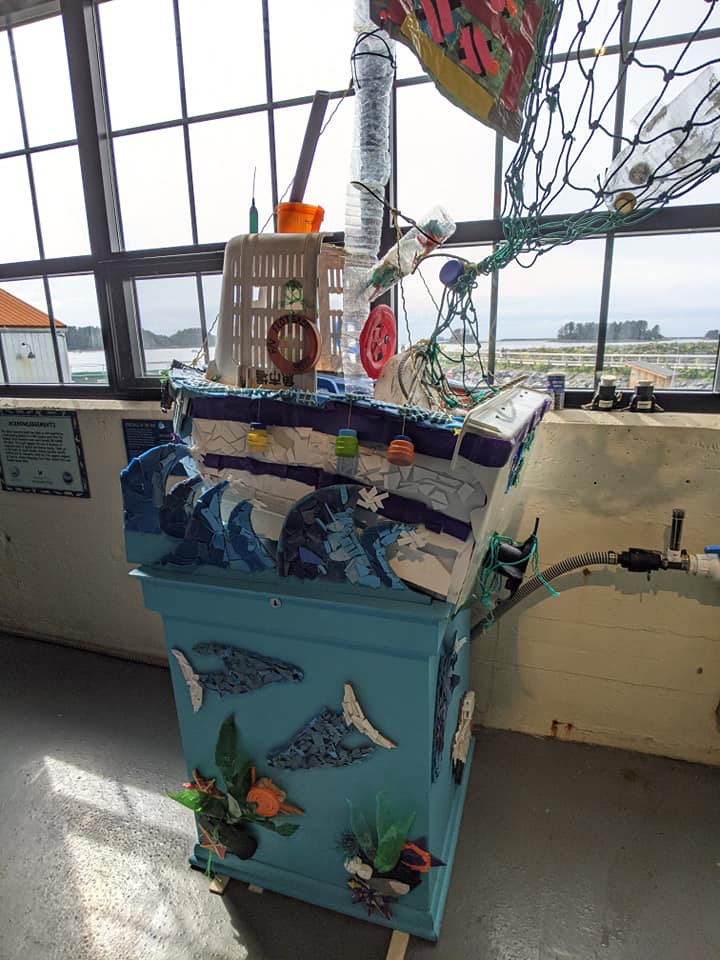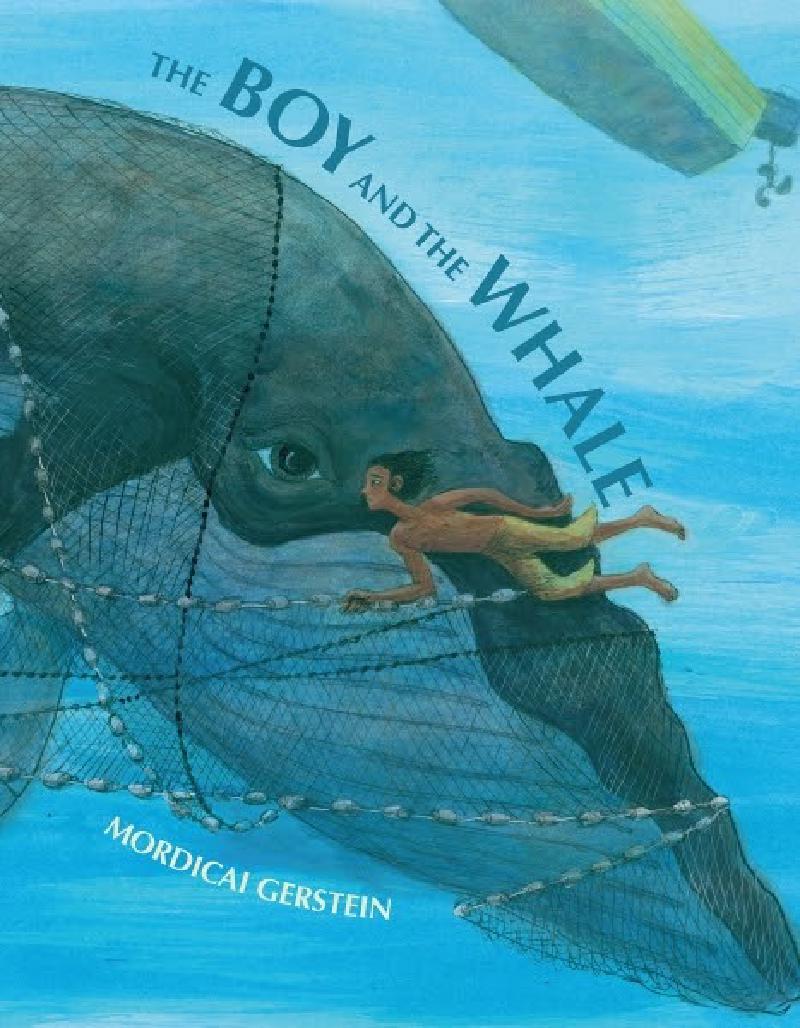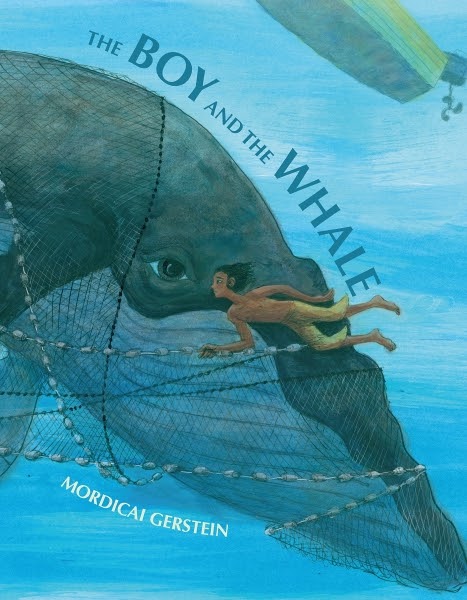Curriculum links
- Science (Habitats-oceans, Needs of living things)
- Geography (Human geography)
Publisher’s summary
A boy and his father discover a whale tangled in their only fishing net. Is the whale dead? While the man worries about losing their net, the boy worries about the whale. He remembers the fear he felt when, caught in a net himself in childhood, he almost drowned before being rescued by his father. When the whale blinks an enormous eye, the boy knows that he has to try to save the creature, no matter how dangerous doing so may be.
Expressive and perfectly paced, this powerful story, The Boy and the Whale, by Caldecott Medal–winner Mordicai Gerstein was inspired in part by a real-life video of a whale’s rescue, and the creature’s joyful dance through the waves after being freed.
In Environmental Education
A great book for thinking about human impact on oceans. When a boy sees a whale caught in their net he worries about saving it. His father worries about their ruined net and what it means for them. A net can be an efficient way to catch many fish, but it can also unintentionally catch animals which fishers do not want. These unwanted animals are called bycatch, and in this story an unfortunate whale has become bycatch. Such a big animal has ruined their net, and because it would be too dangerous to bring in the whale, their catch is ruined aswell. Similar problems are faced by real fishers.
The contrast in between the fathers concern for the net and their livelihoods, and the boy’s concern for the whale is stark. A valuable reminder that sometimes the ability to protest and be concerned about the environment is a privileged position. We can imagine why the father’s concern for how his family will make money or get food, and his concern for his son’s safety are more important to him than the fate of the unfortunate whale. The son does not have to worry about making money or bringing home food, so he has the freedom to be concerned about the whale.
The scene with the boy looking into the whale’s enormous eye while holding a knife reminds me of the devastating legacy that commercial whaling had on these ocean giants. Whales can live for over 100 years, meaning it is possible there are still whales alive today who remember when hundreds of ships roamed the seas hunting them and their friends. What would life have been like back when those elder whales were young and many more of their kind swam the oceans?

Discussion ideas
Different points of view - The father and son in the story have very different perspectives on the situation with the whale. Kids can discuss whether they see the father’s point of view or the boy’s. Why is the father more worried about the fact that the whale has runied the net? Extend the discussion by thinking about what the father might need in order to be more worried about the safety of the whale.
The whale’s point of view - Imagine what it was like for the whale to be tangled up. How might it have felt when the two humans came up to it? What was it doing when it jumped out of the water at the end?
Activity ideas
Untangle a human knot - Have the group stand in a circle. Walk closer together until everyone can reach out and hold hands with two different people, one person in each hand. Now the group needs to work together to untangle the human knot so everyone is back in a circle. People are only allowed to let go of hands so arms aren’t too twisted up! Keep track of how long this takes, and imagine how long it could have taken to untangle the whale from the net.
- Variations:
-
Have one person stand in the middle of the group as the tangled up whale. They also act as the director, orchestrating the detangling effort.
-
Participants can start with a strip of fabric held in one hand. Everyone needs to grab hold of someone else’s fabric. This can help with anxiety about holding hands, and allows a bit more wiggle room so arms don’t get too twisted up.
-
Everyone holds their breath while untangling. You can take a breath at any time but when you do you must say “Breathe!”, letting everyone know they can come up for air. Count how many breaths it takes.
-
Deep sea food webs - Whales are thought to be an important way that
carbon gets from the ocean surface, to the deep ocean where it is sequestered
from the atmosphere. Kids can research the ecosystems that form around ‘whale
falls’ and the wierd and wonderful creatures in these special temporary
habitats. Make a food web to show how deep sea creatures are connected to
whales.
Video of a whale fall - EV Nautilus via YouTube
What happens when a whale dies? - article from Natural History Museum London
Design better nets - Bycatch is anything caught by a net other than what
the fishers want to catch. Kids can try their hand at designing better nets.
Can they design a net that catches full grown fish but lets smaller ones
through? What about nets that don’t tangle up whales or dolphins? Are there
other ways of catching fish which might have less bycatch?
Check out this article for some ideas - Ensia, University of Minnesota’s Institute on the
Environment
Relative sizes - Have a look at the average size of different types of
fishing gear and different marine animals. Use a ruler and/or graph paper to
draw a picture showing different types of fishing gear and animals to scale.
You could also create sculptures roughly to scale using collected recyclables.
Looking at the completed pictures, how does the relative scale of fishing gear
and wildlife make students feel? What methods seem likely to be more
sustainable? Which methods help fishers make a living? Why do bigger fishing
nets make fish fingers to cost less?
Fishing gear and risks to wildlife - National Oceanic and Atmospheric Administration
Commercial fishing methods - British Sea Fishing
 Scuplture made from plastic littler collected from the beach. Sitka Sound Science Centre.
Scuplture made from plastic littler collected from the beach. Sitka Sound Science Centre.
Further exploration of themes in the book
Lost fishing gear
Challenges and misperceptions around global fishing gear loss estimates - Journal of Marine Policy
Whales
Population status - International whaling commision Why do whales breach? - WhaleFacts.org
More about the book
Lesson ideas and about the author - teachingbooks.net
Tried any activities?
If you’ve used this book with your class we’d love to hear about it! Photos, stories, comments, or suggestions. We love them all!

